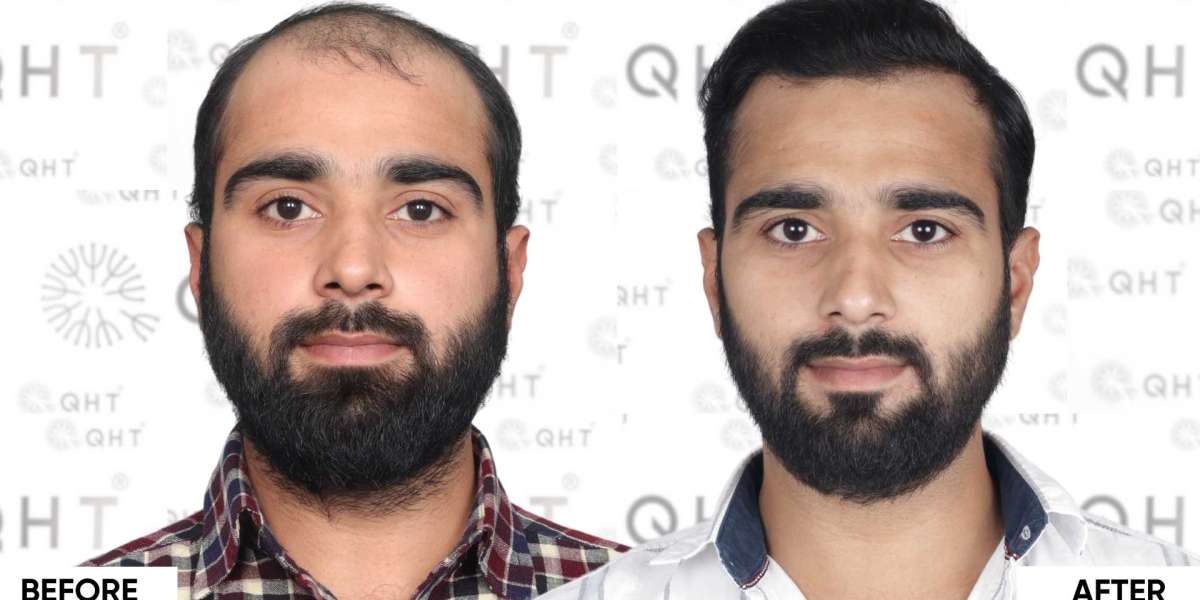Hair loss affects millions of people worldwide, leading to a growing demand for effective hair restoration solutions. One of the most popular and permanent methods to combat hair loss is hair transplantation. India has emerged as a global hub for hair transplants, offering world-class treatments at affordable prices. However, before opting for the procedure, it's essential to understand the hair transplant cost in India, the factors influencing it, and the quality of services provided.
In this article, we’ll delve into all aspects of hair transplant costs in India and explore why more people are choosing India for their hair restoration needs.
What is a Hair Transplant?
A hair transplant is a medical procedure where hair follicles are extracted from a donor area (usually the back of the scalp) and transplanted to balding or thinning areas. The two most common techniques used in hair transplants are:
- FUT (Follicular Unit Transplantation): In this method, a strip of skin containing hair follicles is removed from the donor area and then dissected into individual grafts, which are implanted into the recipient area.
- FUE (Follicular Unit Extraction): This minimally invasive technique involves extracting individual hair follicles directly from the donor area and transplanting them into the balding area. FUE is preferred for its quicker recovery time and reduced scarring.
Both procedures are widely practiced in India, and their costs can vary significantly based on various factors.
Factors Influencing Hair Transplant Cost in India
The hair transplant cost in India can be influenced by several factors, including:
- Technique Used (FUE vs. FUT): The technique you choose plays a significant role in determining the cost of your hair transplant. FUE, being a more advanced and time-consuming method, typically costs more than FUT.
- Number of Grafts: The number of grafts required is a major factor in calculating the total cost. Generally, more grafts are needed to cover larger areas of baldness, which increases the price.
- Clinic Location: The city where you undergo your hair transplant can also impact the cost. Major cities like Delhi, Mumbai, and Bangalore often have higher prices compared to smaller cities. However, these cities also offer some of the best clinics and experienced surgeons in the country.
- Surgeon’s Expertise: The skill and experience of the surgeon performing the transplant is crucial. Highly experienced and renowned surgeons may charge more, but the results they provide are often worth the investment.
- Clinic Reputation and Technology: Reputed clinics that use state-of-the-art technology and equipment often charge a premium. However, the advanced methods they employ lead to better results and patient satisfaction.
- Additional Services: Some clinics offer additional services such as pre-procedure consultations, post-procedure medications, and follow-up sessions. These services can add to the overall cost.
Average Hair Transplant Cost in India
The hair transplant cost in India is relatively lower compared to other countries, especially in Europe and the United States. On average, the cost of a hair transplant in India can range between INR 25,000 to INR 1,00,000 depending on the factors mentioned above. This cost is calculated based on the number of grafts, with each graft costing between INR 20 to INR 100.
For example:
- A person needing 1,000 grafts may pay between INR 20,000 to INR 1,00,000 depending on the clinic and the technique chosen.
- A person needing 3,000 grafts may pay between INR 60,000 to INR 3,00,000.
Why Choose India for Hair Transplants?
India has become a sought-after destination for hair transplants for several reasons:
- Affordable Pricing: One of the main reasons people from around the world come to India for hair transplants is the affordability. The hair transplant cost in India is significantly lower than in Western countries, making it accessible to a broader audience without compromising on quality.
- Highly Skilled Surgeons: India is home to some of the most experienced and highly skilled hair transplant surgeons. Many doctors in India have received international training and are well-versed in the latest techniques, ensuring high-quality results.
- World-Class Clinics: India has numerous state-of-the-art clinics equipped with the latest technology and modern facilities. These clinics adhere to strict hygiene and safety protocols, ensuring a comfortable and safe experience for patients.
- Customized Solutions: Indian clinics provide personalized care and tailor treatments based on individual needs. Whether you require a small or large number of grafts, clinics in India offer customized solutions to meet your specific requirements.
- Medical Tourism: India is a hub for medical tourism, attracting patients from around the world for various medical procedures, including hair transplants. The low costs, combined with high-quality healthcare, make it an ideal destination for those seeking hair restoration.
What to Expect During the Procedure
The hair transplant procedure typically follows these steps:
- Consultation: Your surgeon will assess your hair loss pattern, donor area, and overall health to determine if you are a good candidate for the procedure. During this stage, the number of grafts needed and the cost will be discussed.
- Preparation: On the day of the procedure, the donor and recipient areas will be cleaned and numbed with local anesthesia to ensure a pain-free experience.
- Extraction: Depending on the technique chosen (FUE or FUT), the surgeon will extract hair follicles from the donor area.
- Implantation: The extracted follicles are then meticulously implanted into the balding or thinning areas of the scalp.
- Recovery: After the procedure, patients can expect mild discomfort, swelling, or redness in the treated areas. Most patients can return to their normal activities within a few days. Full results typically appear within 6 to 12 months as the transplanted hair grows naturally.
Post-Procedure Care
After a hair transplant, proper post-procedure care is essential to ensure successful results. Patients are advised to follow these guidelines:
- Avoid strenuous activities and direct sun exposure for a few weeks.
- Follow the prescribed medication regimen to reduce swelling and prevent infection.
- Be gentle while washing your hair and avoid scratching the scalp.
- Attend follow-up appointments as recommended by your surgeon.
Long-Term Results
Hair transplants are considered a permanent solution to hair loss. The transplanted hair follicles are resistant to the hormone DHT (dihydrotestosterone), which causes hair loss, meaning they will continue to grow in their new location. As a result, patients can enjoy long-lasting, natural-looking hair restoration.
Conclusion
The hair transplant cost in India is highly competitive, making it a preferred destination for individuals seeking affordable yet effective hair restoration solutions. With top-tier clinics, experienced surgeons, and advanced techniques, India offers a winning combination for anyone considering a hair transplant. By understanding the factors that influence the cost and choosing a reputable clinic, you can achieve great results without breaking the bank.
If you're looking for a cost-effective, high-quality hair transplant procedure, India could be the perfect place to restore your hair and regain your confidence.














